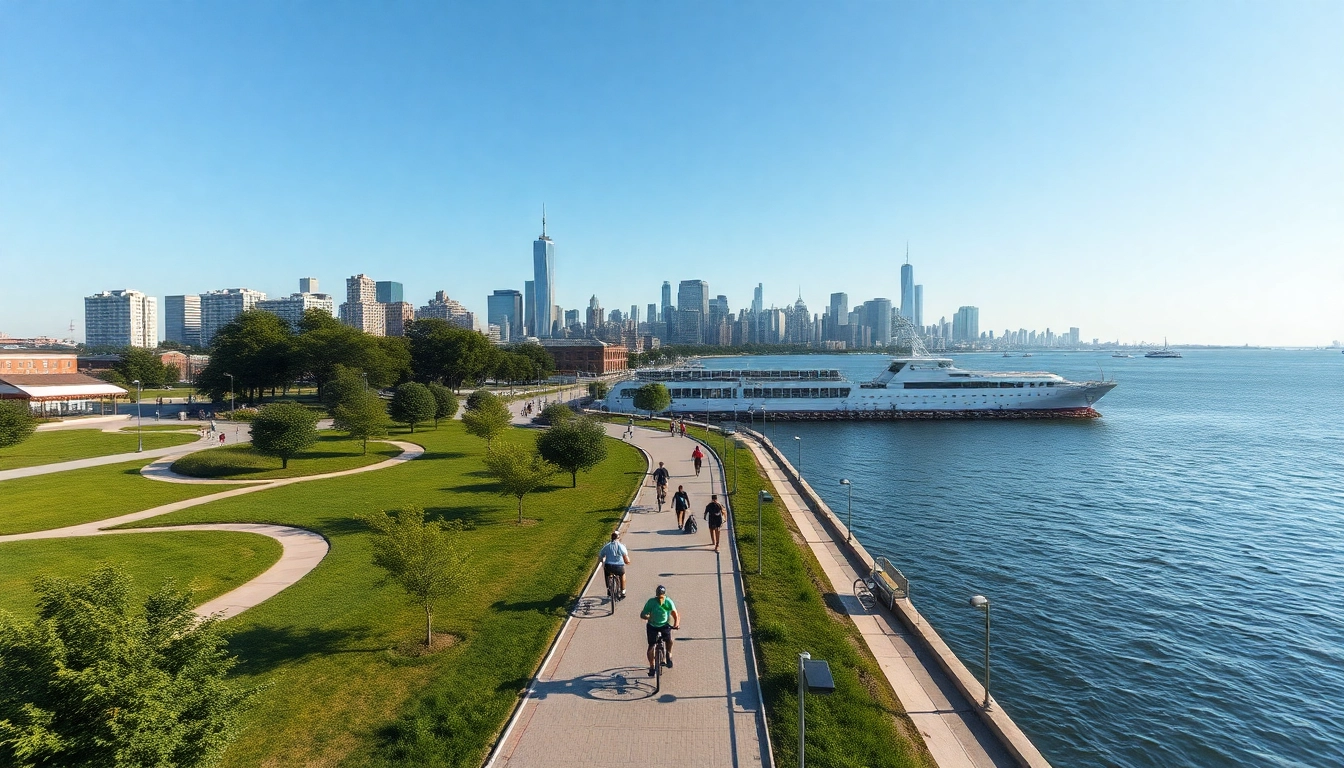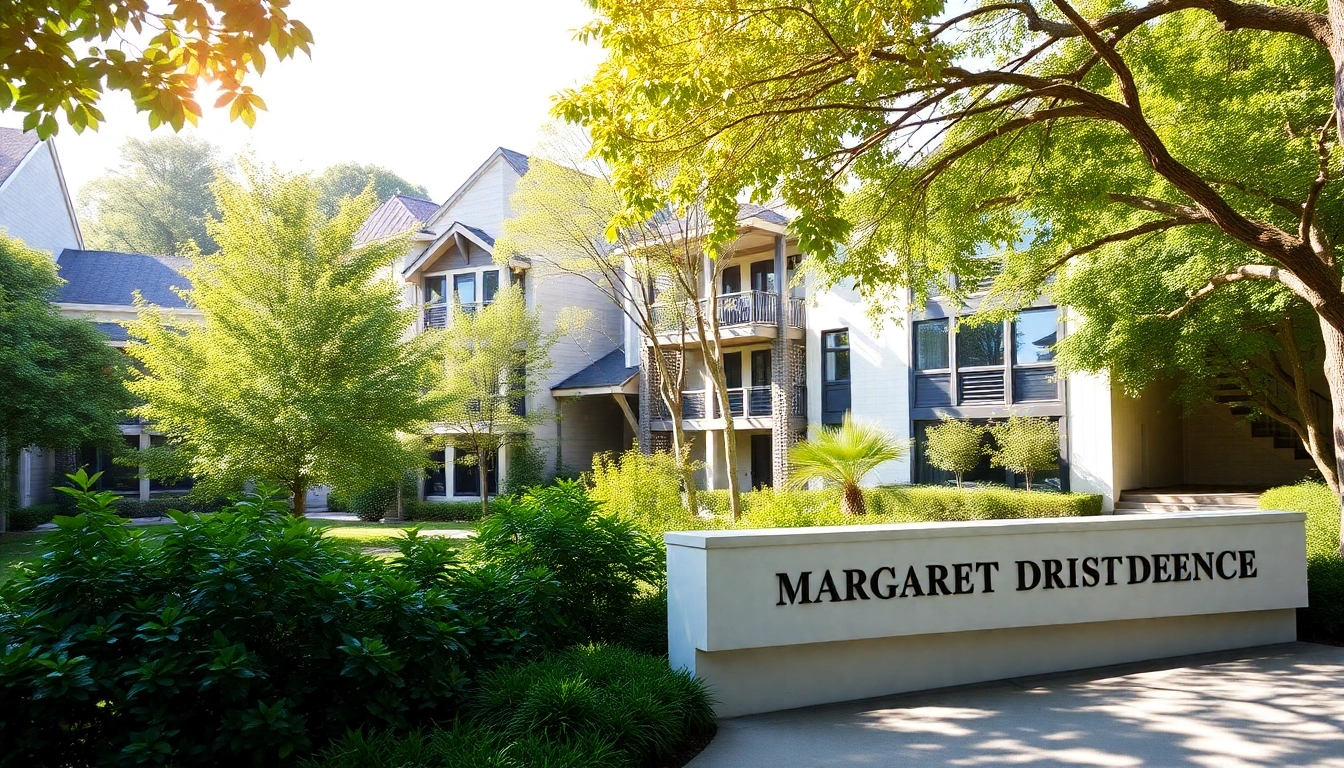Introduction to Jersey City NJ
Nestled in the heart of northeastern New Jersey, Jersey City NJ presents a unique blend of urban living and rich historical tapestry. This vibrant city stands as one of the most populous in the state, serving as a cultural melting pot that attracts residents and visitors from around the globe. Its proximity to Manhattan adds to its allure, making Jersey City a frequent starting point for those venturing into the hustle and bustle of New York City. This article delves into the multifaceted aspects of Jersey City, covering everything from its geography to its diverse neighborhoods and lifestyle amenities, offering prospective residents or visitors insights into what makes this city a compelling destination.
Overview of Jersey City’s Geography
Jersey City is strategically located along the eastern waterfront facing the Hudson River, where it gracefully meets Upper New York Bay. Spanning just under 22 square miles, the city is bordered by the river, creating stunning views of the Manhattan skyline just across the water. Its geographical location contributes significantly to its thriving economy, culture, and lifestyle, making it an attractive place for both work and leisure.
The eastern waterfront is adorned with parks such as Liberty State Park, which offers panoramic views of iconic landmarks like the Statue of Liberty and Ellis Island. The landscape is characterized by vibrant waterfront walkways that enhance outdoor activities, encourage leisurely strolls and hosts community events throughout the year.
Key Historical Milestones of Jersey City
The history of Jersey City is rich and layered, marked by several key milestones that have shaped its development over the years. Originally inhabited by the Lenape Native Americans, the area was settled by Europeans in the early 1600s. It played a critical role during the American Revolutionary War, serving as a strategic location for British troops due to its proximity to New York City.
In the 19th century, Jersey City flourished as a major transportation hub, thanks to the construction of railroads and ferry services. The opening of the Erie Railroad Terminal and the subsequent development of Ellis Island as an immigration station in the late 1800s transformed the city into an entry point for millions of immigrants, further diversifying its population and cultural landscape.
Today, Jersey City continues to honor its past while embracing modern development, with historic districts and preserved architecture coexisting alongside contemporary structures.
Demographics and Cultural Diversity in Jersey City
With a population exceeding 289,000, Jersey City is one of the most diverse cities in the United States. The demographic landscape reflects a multitude of ethnicities, with significant populations of Hispanic, Asian, and Black residents, alongside a growing number of white residents. This cultural richness is evident in the city’s array of festivals, cuisine, and community events, providing a vibrant living experience for all its residents.
Jersey City’s cultural diversity is celebrated through various institutions, community events, and local cuisines that fuse international flavors. From the vibrant streets to ethnic restaurants, the city serves as a testament to the American dream, welcoming individuals from varied backgrounds and traditions.
Living in Jersey City NJ
Benefits of Urban Living in Jersey City
Urban living in Jersey City comes with numerous advantages. One of the most significant benefits is the convenience of community amenities paired with accessible urban infrastructure. Residents can engage with a bustling environment rich in shops, restaurants, and recreational spots. With easy access to public transportation, commuting to Manhattan is seamless, often taking less than 20 minutes by PATH train.
The cultural vibrancy is complemented by community engagement opportunities, with various events and activities designed for residents to connect and collaborate. The city also offers a myriad of parks, fitness facilities, and recreational activities, making it easier for individuals to maintain an active lifestyle while enjoying urban comforts.
Cost of Living and Housing Market Analysis
The cost of living in Jersey City has become a topic of interest among potential residents. As the city’s desirability has increased, so have housing prices. The average rent for apartments varies across neighborhoods, with areas closer to the waterfront commanding higher prices due to their stunning views and proximity to amenities.
While the initial investment may seem high, the average salaries in Jersey City are competitive, particularly in finance, technology, and healthcare sectors. A well-balanced consideration of income and expenditure will reveal that many consider it worth the cost. Additionally, housing options range from luxury apartments to more affordable residences, catering to diverse budgets.
Education and Employment Opportunities in Jersey City
Education is a priority in Jersey City, with a mix of public and private schools providing quality education at various age levels. The city is home to several renowned institutions, including Hudson County Community College, which offers various programs and degrees for higher education.
The employment market in Jersey City is thriving, with its proximity to Wall Street attracting many financial and corporate sectors. Various industries, from technology startups to healthcare providers, are continually hiring, providing ample employment opportunities for new residents. The city’s continued development projects indicate an experiencing job growth trajectory.
Attractions and Activities in Jersey City NJ
Must-Visit Parks and Outdoor Spaces
Your experience in Jersey City is incomplete without exploring its outdoor spaces, which cater to relaxation and recreation. Liberty State Park offers not only beautiful views but also various outdoor activities, including biking, jogging, or picnicking with family and friends. The park is a central point for community events, especially during the summer months, including concerts and celebrations.
Pier A Park, located along the waterfront, provides an extraordinary setting for leisure activities with pathways for walking and jogging, grassy areas for picnicking, and the stunning backdrop of the Manhattan skyline. Moreover, smaller parks like Hamilton Park and Van Vorst Park hold farmer’s markets and outdoor movies, engaging the community in various ways and promoting a lively neighborhood atmosphere.
Cultural Institutions and Events
Jersey City is not just about picturesque views; it is also a hub for culture and arts. The Liberty Science Center stands out, boasting interactive exhibits, live demonstrations, and an IMAX dome theater. It serves both educational and entertainment purposes, attracting families and school groups alike.
Throughout the year, Jersey City hosts numerous cultural festivals, including the Jersey City Art & Studio Tour and the NJCU Poetry Festival. These events showcase local artists, musicians, and performers, promoting creativity while fostering community spirit.
Dining and Nightlife Scene in Jersey City
Jersey City boasts a diverse culinary scene that mirrors its cultural richness. From Italian eateries in the quaint streets of the Heights to upscale dining options in downtown, food lovers will find an array of choices to explore. Restaurants like The Warehouse Café and Culinary BBQ serve local favorites, while international cuisine options include Indian, Thai, and Ethiopian offerings that reflect the city’s diversity.
As the sun begins to set, Jersey City transforms with a vibrant nightlife scene. Rooftop bars and lounges like “33 & Main” or “The Ashford” provide ambient spaces with captivating skyline views to unwind after a long day. Additionally, local breweries contribute to a growing craft beer scene, making it a hotspot for social gatherings.
Transportation and Accessibility in Jersey City NJ
Public Transit Options for Commuters
Transportation in Jersey City is robust, primarily due to its extensive public transit system. The PATH train seamlessly connects Jersey City to Manhattan, making it a preferred choice for daily commuters. Light rail services offer additional convenience, facilitating easy access to other parts of Hudson County.
Buses also serve a vital role in the city’s transit network, providing connections to NYC and neighboring areas. The accessibility of public transportation has been a game changer, allowing residents to navigate the region efficiently and without the hassle of parking in the bustling city.
Major Roads and Accessibility to NYC
For those who prefer traveling by car, Jersey City’s road network connects seamlessly to major highways, including the New Jersey Turnpike (I-95) and Route 78, enhancing accessibility. The George Washington Bridge and Holland Tunnel are within reach, providing direct routes to New York City.
However, traffic congestion during peak hours can be a concern. Planning ahead and utilizing public transit can often save time and reduce stress while commuting.
Tips for Getting Around Jersey City Efficiently
To navigate Jersey City efficiently, residents often recommend embracing public transit options. Using the NJ Transit App can help commuters plan their trips effectively, providing real-time information about train and bus schedules.
Biking has also gained popularity within the city, supported by bike lanes and rental services. For those who wish to explore the city at a leisurely pace, biking offers a refreshing alternative that allows for sightseeing while commuting.
Future Developments in Jersey City NJ
Upcoming Infrastructure Projects
Jersey City’s future looks promising as several infrastructure projects are underway aimed at enhancing public amenities. From new transportation facilities to upgraded parks, these developments signify the city’s commitment to providing a high-quality living environment for its residents.
Among the notable projects is the expansion of the PATH station and plans for developing pedestrian-friendly spaces, all geared towards improving overall accessibility and urban experience. This forward momentum is vital in accommodating the city’s growing population and economic needs.
Trends in Real Estate Development
As Jersey City continues to grow, real estate development trends showcase a focus on sustainability and mixed-use projects. Developers are increasingly investing in eco-friendly buildings aimed at minimizing environmental impact while offering modern living spaces.
Converted warehouses and historical buildings are being transformed into stylish lofts, combining urban aesthetics with contemporary comforts. This trend not only addresses the housing demand but also preserves the city’s unique historical charm.
Community Initiatives for Sustainability
Sustainability is at the forefront of Jersey City’s growth agenda. Various community initiatives aim to promote eco-friendly practices, such as community gardens, recycling programs, and green building standards. The city encourages its residents to participate actively in environmental conservation efforts, creating a sense of shared responsibility for the community’s well-being.
Educational programs are also available, providing residents with tools and insights to engage in sustainable practices, whether through energy conservation at home or participating in local clean-up initiatives. Such collaborative efforts underscore Jersey City’s dedication to becoming a forward-thinking urban center.



